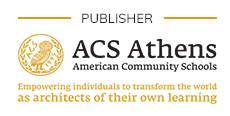ISJ April 2018: The next 50 years – a higher calling?
10,00€
Mary Hayden and Jeff Thompson
The Context
The path to the IB’s current well-respected status has been well documented, from the trailblazing Diploma Programme’s first examinations in 1970 through to the point where the IB provides curricula for the education of students between the ages of 3 and 19. As the IB Continuum of programmes has developed, so too has the number of IB teachers and their need for professional development – satisfied in part by the creation of the IB Educator Certificates (IBEC: previously known as the IB Teacher Awards). Developed in conjunction
with universities worldwide, the postgraduate IBEC models offered by different institutions fall into two main groups: the ‘pre-service’ model intended for those who seek to become teachers of one of the IB programmes, and the ‘in-service’ model designed for those who already have IB experience and who wish to relate study of a range of educational issues to that experience as a means of improving their practice. After 50 years, the IB is thus now a provider of an impressive suite of programmes, not only for students across the school age-range, but also for those who wish to become IB teachers, and for experienced IB teachers and leaders who wish to develop as practitioners. In speculating about ways in which that position might develop during the next 50 years, we have chosen to focus on one crucial dimension of the IB’s activities – the link between the IB and universities. Following a brief review of the situation to date, we will propose a possible direction for future development.



